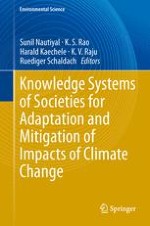2013 | OriginalPaper | Chapter
Mitigating the Water, Energy and Food Crisis: A Humane Solution
Authors : S. Subramanian, G. Bhalachandran
Published in: Knowledge Systems of Societies for Adaptation and Mitigation of Impacts of Climate Change
Publisher: Springer Berlin Heidelberg
Activate our intelligent search to find suitable subject content or patents.
Select sections of text to find matching patents with Artificial Intelligence. powered by
Select sections of text to find additional relevant content using AI-assisted search. powered by
